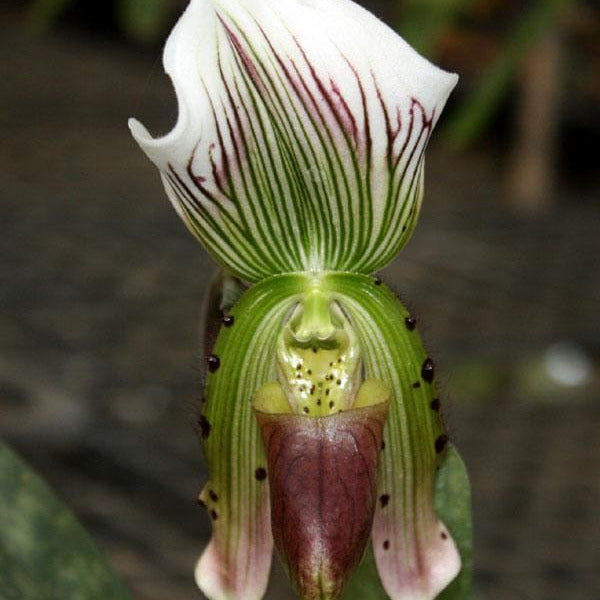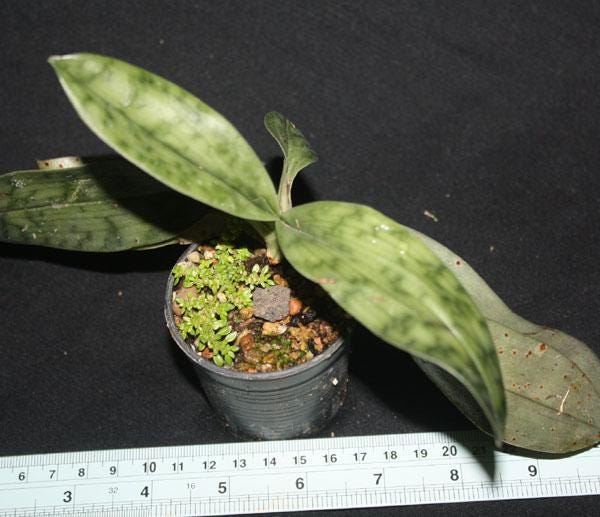ร้านค้าของฉัน
Paphiopedilum callosum 1 plant home garden orchid collection orchid,lady slipper,orchid pot,live plants
Paphiopedilum callosum 1 plant home garden orchid collection orchid,lady slipper,orchid pot,live plants
Couldn't load pickup availability
100 % grow from seed. Cultivated from seed, flask and growing in our standard greenhouse
🪴Paphiopedilum callosum 1 Plant bloom size🪴
🪴 1. Potting Medium
This species requires an airy, well-draining, and moisture-retentive medium, but not soggy.
Recommended mix:
Medium-grade pine bark
Charcoal (lump or chunks)
Lava rock or pumice
Perlite for added aeration
A small amount of sphagnum moss (if your environment is dry)
❌ Avoid dense, soggy media like soil or fine peat.
☀️ 2. Light
Prefers bright, filtered light, similar to most Paphiopedilums.
Ideal light:
800 to 1,500 foot-candles
Near a bright window (east or north-facing), shaded from direct sunlight
Use 50–70% shade cloth if grown outdoors or in a greenhouse
🔥 Too much light → bleached or scorched leaves
🌑 Too little light → no flowering
🌡️ 3. Temperature
Thrives in intermediate to cool temperatures
Ideal range:
Daytime: 22–28°C (72–82°F)
Nighttime: 16–20°C (60–68°F)
🌡️ A drop of at least 5°C (9°F) between day and night helps induce blooming.
💧 4. Watering
Keep the medium evenly moist, but not soggy.
Water when the top layer starts to dry out.
Best to use rainwater, RO water, or distilled water, especially in areas with hard tap water.
⚠️ Avoid letting water sit in the crown of the plant — it may cause rot.
💨 5. Humidity & Air Circulation
Prefers 60–80% humidity
Ensure good air movement at all times to prevent fungal or bacterial infections.
🧪 6. Fertilizing
Use a balanced, diluted fertilizer (1/4 to 1/2 strength).
Recommended formula: 20-20-20 or similar balanced NPK
Feed 2–3 times per month during active growth.
Flush with plain water every 1–2 weeks to prevent salt buildup.
🔁 7. Repotting
Every 1–2 years, or when the medium breaks down.
Best done in spring or early summer, just before or as new roots emerge.
⚠️ Important Notes
Never let water collect in the plant’s crown – it's prone to rot.
Avoid sudden environmental changes (temperature, humidity).
Watch for pests like mealybugs and fungus gnats; also keep an eye out for fungal issues in high humidity.
Share



